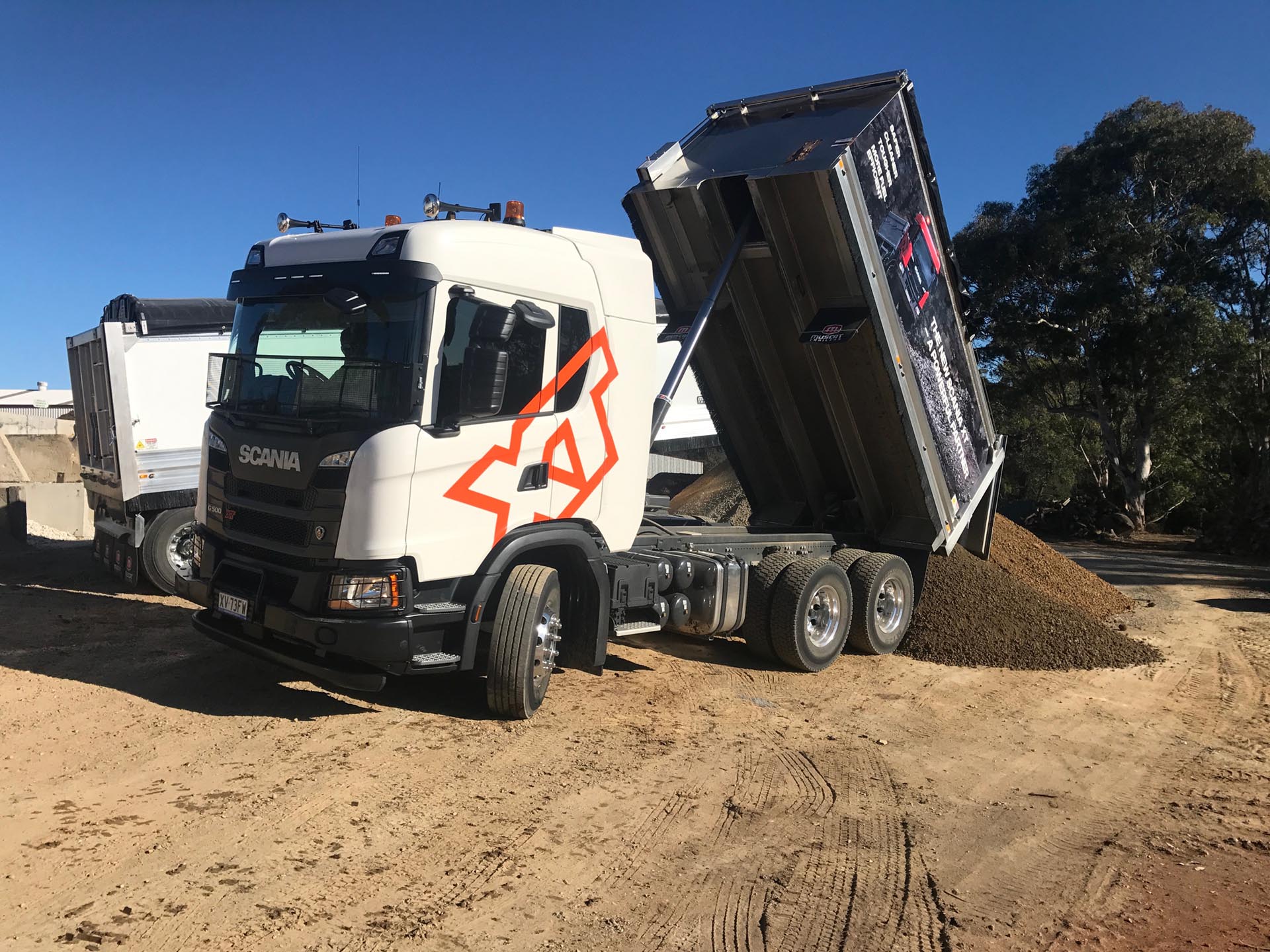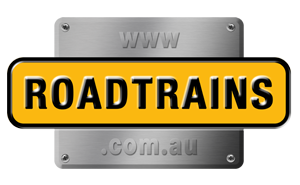This inspiration behind this article on how to reverse a dog trailer came from readers’ numerous requests of an earlier article I’d written on how to back a B-Double. In addition, many asked if I could write a technical advice article on the secrets of how to reverse or jackknife a dog trailer.
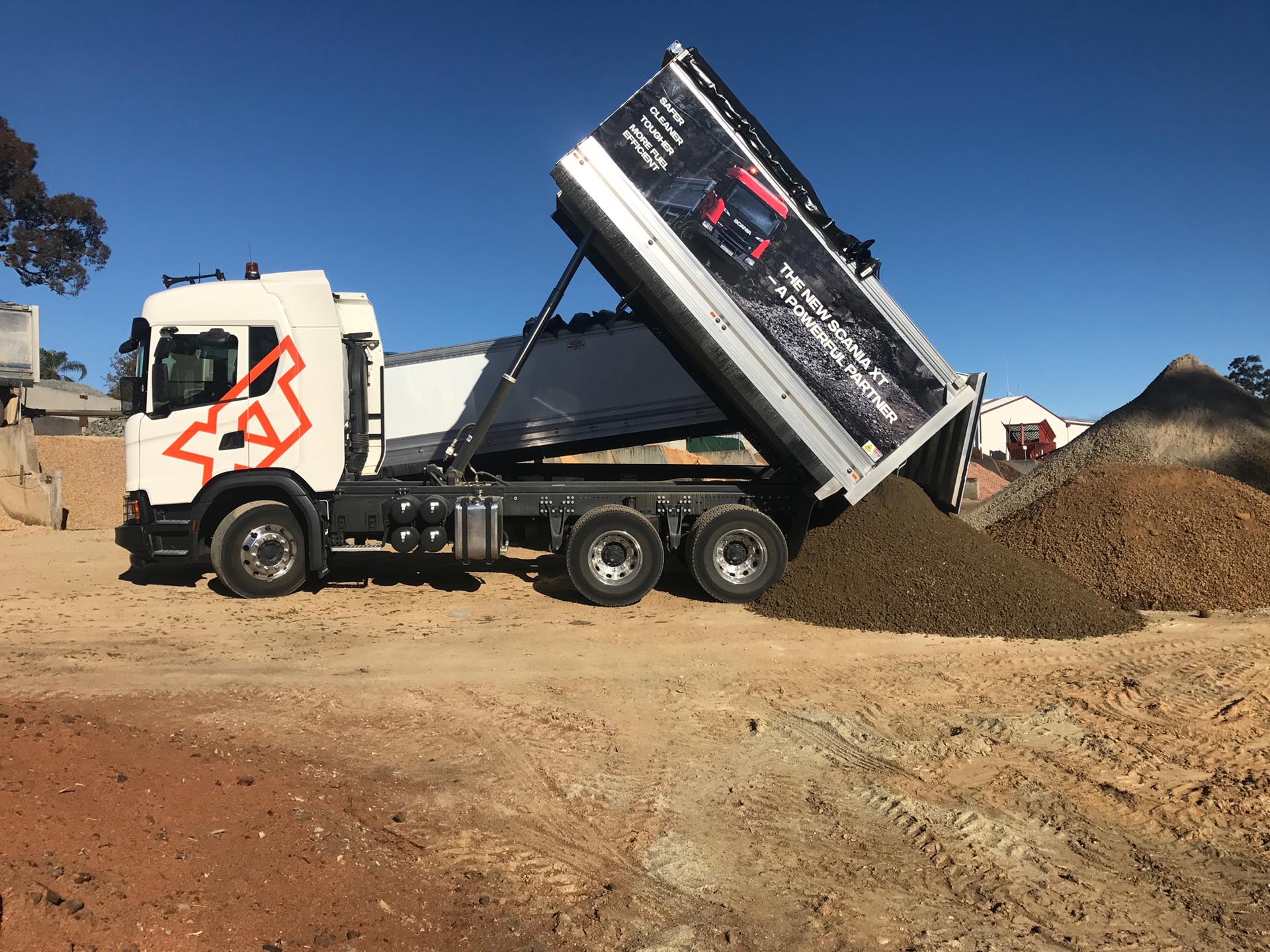
How to jackknife a truck and dog
If you are new to truck and dog operations, the following information in this article will certainly put your mind at ease when it comes to reversing a truck and dog successfully.
As I’ve explained in previous articles, reversing your truck is not optional, it’s a frequent requirement in the trucking industry! Especially, that is, if you happen to drive a tip-truck. Thankfully, however, it is something that you should quickly and easily master. That’s because you get to practice reversing over and over, often several times a day.
The task of reversing a truck and dog is no different to any other task. More often than not, drivers can choose between the hard way or the easy way to perform the job. In this article, we’ll explain the easy way.
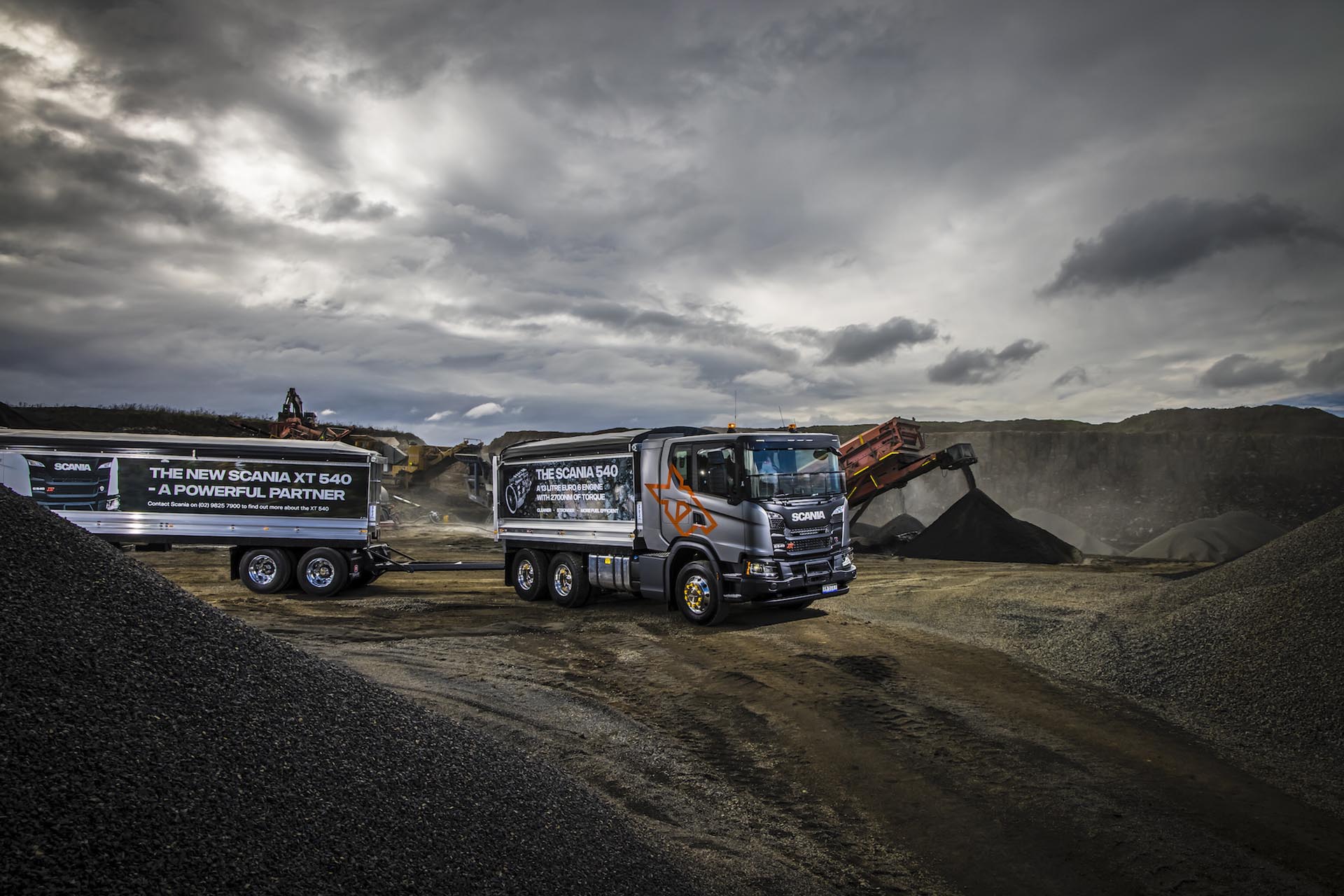 Get Out and Look
Get Out and Look
If, for instance, you arrive at a job site and are required to fill out a “Take-5” risk assessment checklist, then in Step-1, you should write GOAL, which is short for “Get Out and Look” for any hazards. It is vitally important that you make sure there is enough room on either side of the trailer. If you have a tipper, it is also imperative that you check that there is ample clearance to manoeuvre the dog trailer to unload the truck body.
On the subject of tippers, you must look up! Make sure that there is enough clearance for the tipper body to raise. Look for power lines, low hanging tree limbs, and if you’re tipping inside a shed, there is enough height to lift the tipper body.
Don’t be afraid to ask for a spotter to make your life a little easier. If a spotter is not available and there are no discernible markings you can use as a guide, then you can place a small object to use a marker on the ground to indicate where to back the trailer. While performing your GOAL walk around, it’s an ideal opportunity to place your marker on the ground. Then once you have completed the reversing manoeuvrer, simply collect your maker.
Remember, too, if you are unsure about where your trailer is heading while reversing, it’s easier and safer to stop. Then, get out of the cabin and thoroughly check it is safe to continue. Ceasing the reversing movement momentarily will allow you to make any adjustments to reduce the risk of expensive damage to the vehicle or surroundings.

How to back a Truck and Dog
Which way to turn the wheel?
If you’re new to truck and dog combination driving, then here is one of Shanksie’s handy trucking hints; the direction the bottom of the steering wheel turns will indicate which direction the trailer will go.
In the case of a truck and dog combination, if you move the bottom of the steering wheel to the left, the trailer’s dolly will go to the left, and the rear of the dog trailer will go to the right.
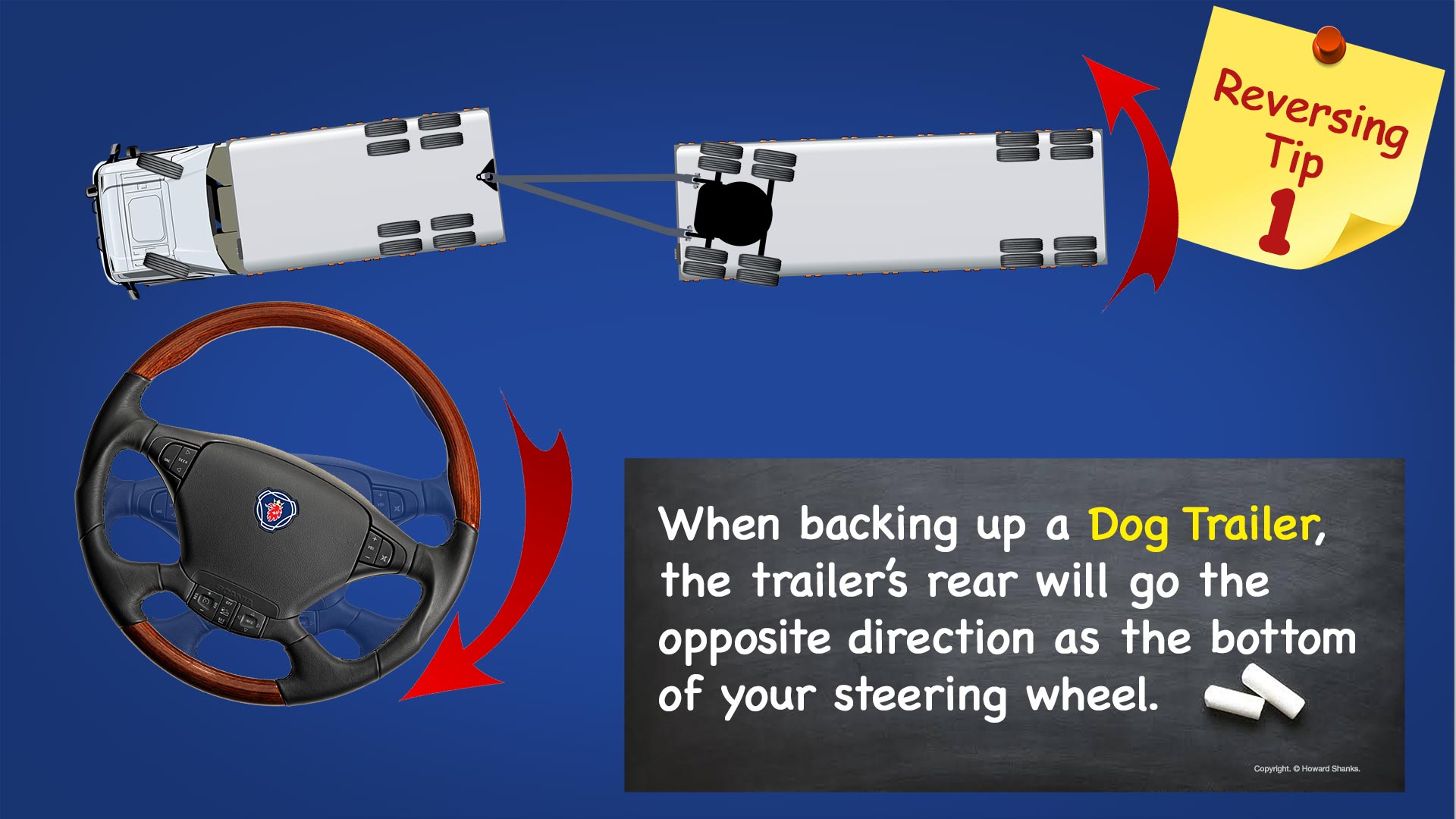 Let’s take a moment to recap the correlation between the movement of the bottom of the steering wheel and how that translates to the vehicle’s direction when reversing. For instance, when backing up a single semi-trailer, the rear of the semi-trailer moves in the same direction as the direction the bottom of the steering wheel turns.
Let’s take a moment to recap the correlation between the movement of the bottom of the steering wheel and how that translates to the vehicle’s direction when reversing. For instance, when backing up a single semi-trailer, the rear of the semi-trailer moves in the same direction as the direction the bottom of the steering wheel turns.
However, this is slightly different with a truck and dog combination because of the additional articulation point. One articulation point is located at the rear of the truck chassis — the second at the front of the trailer. As a result, dog trailers, much like a B-Double combination’s rear trailer, will turn in an opposite direction as the direction of movement at the bottom of the steering wheel.
Regardless of the combination style, be it a single trailer, B-Double or truck and dog, always try and begin your reversing manoeuvre with the rear of the trailer lined up to where you are trying to end up. Also, try to get the combination as straight as possible. Finally, keep an eye on the trailer in your mirrors when you begin your slow reversal. Meanwhile, keep adjusting your steering slightly in the direction required to keep the rear of the trailer heading in the direction you need.
Keep in mind that it is always easier to add more steering input than it is to fix “too much” steering.
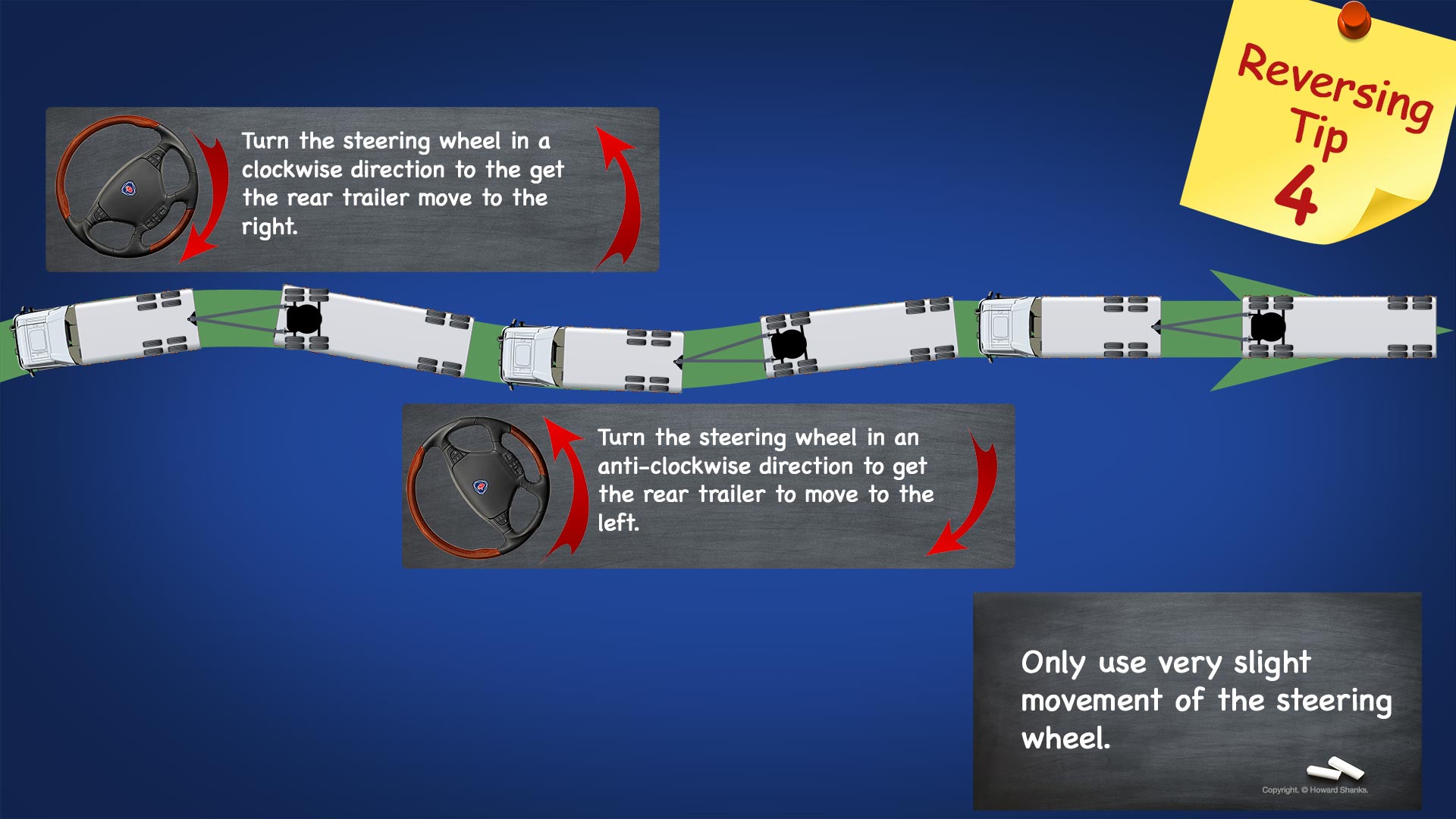 Product Bins
Product Bins
Concrete and landscape yards are notoriously tight places to manoeuvre any heavy vehicle combination. As a result, rarely will you ever get the opportunity to pull out straight in front of these bins.
One of the easier ways to reverse a truck and dog trailer combination into product bins is to drive past perpendicular to the bin you’re going to unload. Keep the bins as close as possible on the driver’s side. This way, you won’t be reversing in your blind side. As you drive past the bin where you’re going to unload, turn the truck slightly left so that you stop the combination at approximately a 15-degree angle heading away from the bin. Finally, come to a stop when the rear of the trailer is roughly a meter past the bin you wish to reverse the trailer in.
Just a side note here. The distance you will need to go past the bin will depend on the dimensions of your particular combination. Consequently, it may take you a few attempts before you know exactly how far to go past the bin to work out what distance is ideally suited to your combination.
 Stopping the combination at a slight angle facing away from the bins sets the trailer up to easily go back into the bin without too much effort. Next, as you commence reversing, move the bottom of the steering wheel slightly to the left. This, in turn, will make the dolly turn a little leftwards, which will make the rear of the trailer move to the right. Finally, once the trailer is heading into the bin, turn the bottom of the steering to the right and chase the dolly around as the trailer enters the bin. With a bit of practice, you’ll be able to get the trailer into most product bins in one attempt. But don’t get rattled if it takes more than a few goes to reverse into some bins especially if manoeuvring in the yard is tight.
Stopping the combination at a slight angle facing away from the bins sets the trailer up to easily go back into the bin without too much effort. Next, as you commence reversing, move the bottom of the steering wheel slightly to the left. This, in turn, will make the dolly turn a little leftwards, which will make the rear of the trailer move to the right. Finally, once the trailer is heading into the bin, turn the bottom of the steering to the right and chase the dolly around as the trailer enters the bin. With a bit of practice, you’ll be able to get the trailer into most product bins in one attempt. But don’t get rattled if it takes more than a few goes to reverse into some bins especially if manoeuvring in the yard is tight.
Remember to take your time and keep an eye out so you don’t hit the bin wall on the blind side of the truck.
Related Reading
Scania G540 XT Tipper Review
Cascadia Truck and Dog Review
Kennedy Folding Quad Dog Review
Kenworth T410SAR Truck and Dog Review
Jack Knifing a Dog Trailer
Once the trailer is empty, lower the trailer slightly but leave the body a tad higher than the truck’s body. This action lets you see where the dolly is and, importantly, what’s around it when you are jack knifing the trailer. It’s vitally important that you know where the dolly is in relation to the product bins, especially if they are narrow, as it’s easy to hit the blind-side bin wall if you can’t see the dolly.
Again, pull the trailer about a meter past the bin you wish to tip into, keep the combination out at least a meter from other bins and objects so you have clearance to swing the truck when you commence to reverse. This time, as you move the bottom of the steering wheel to the right, the dolly moves to the right, making the trailer go towards the left. Once the trailer is moving left, turn the bottom of the steering wheel leftwards and make slight steering adjustments, so the right rear wheel of the dolly is heading towards a point that is about a meter outward from the far wall (from the driver) of the bin. Once that right rear dolly wheel is in line with the far bin wall, turn the bottom of the steering wheel to the left to complete the jack knife procedure.
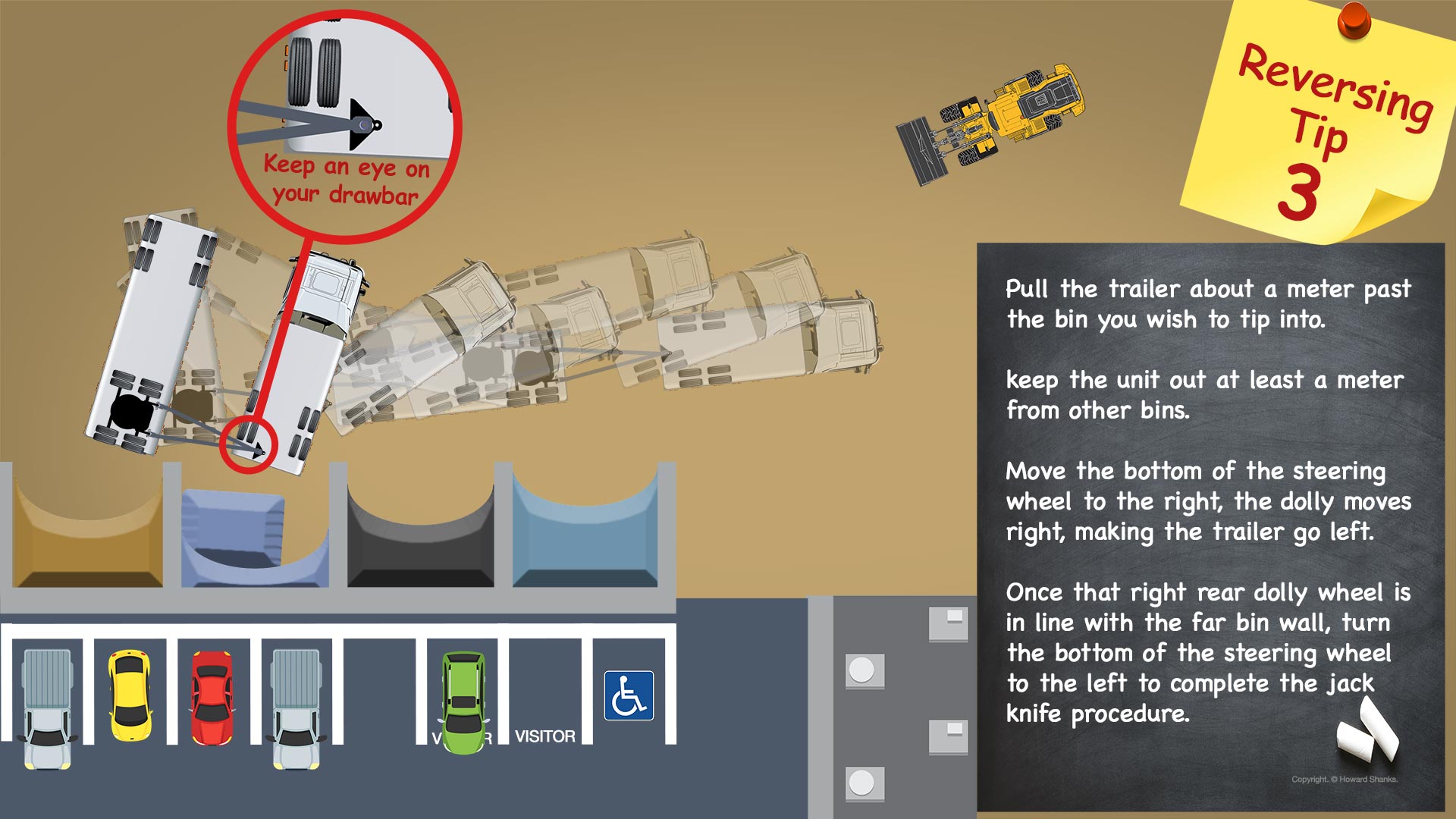 At this time, it is important to keep an eye on your drawbar, do not go too far back or force the truck backwards severely as this will bend the dolly drawbar
At this time, it is important to keep an eye on your drawbar, do not go too far back or force the truck backwards severely as this will bend the dolly drawbar
As we’ve emphasised in previous advice articles, don’t drive beyond your ability. If you’re not comfortable about jack knifing your truck and dog into product bins, simply split the combination and reverse the truck separately. Time-wise, it only takes approximately five minutes longer to disconnect the dog trailer compared to half an hour of screwing the combination around in the customer’s yard trying to get into a tight bin. Remember, if you’re not comfortable reversing, splitting up the combination is a good option that significantly reduces the risk of an incident.
The main take-away is to remember only to make small changes to the steering wheel and take your time. And put the main focus on the dolly to get the trailer back to where you want it.
